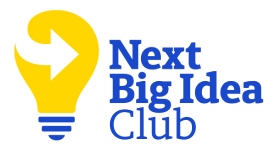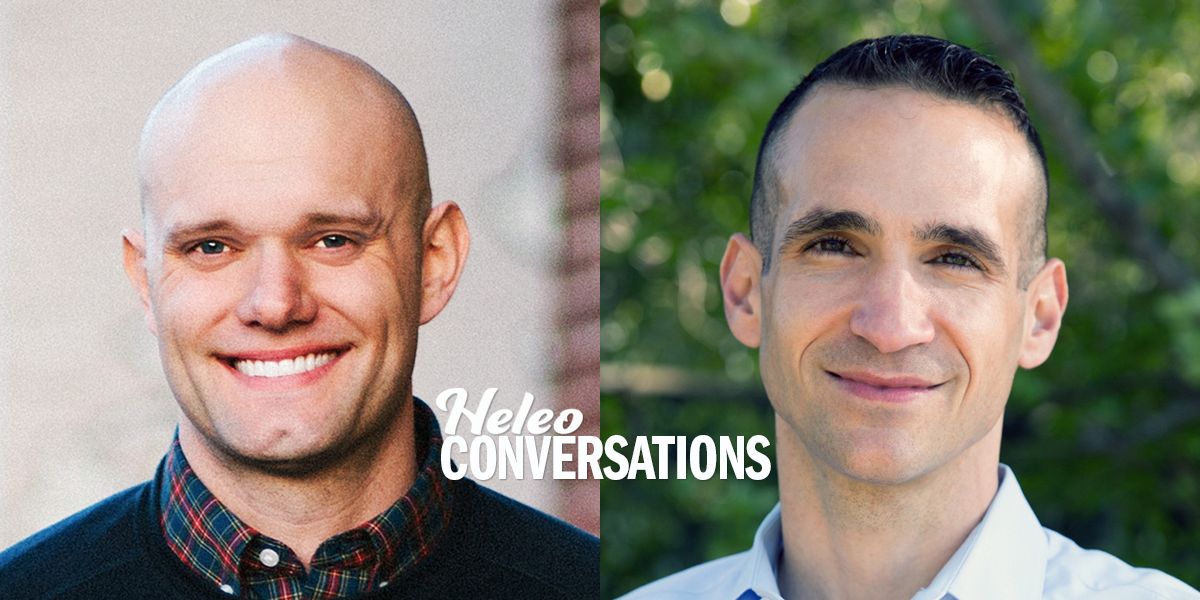James Clear is a productivity expert who uses behavioral science to help over a quarter of a million newsletter subscribers optimize their habits. He recently sat down with Nir Eyal, author of Hooked: How to Build Habit-Forming Products and former Professor at the Stanford Graduate School of Business about the future of the information age and how we can beat our tech addictions.
James: Let’s talk about the influence of technology on our daily habits. You’ve written about how much we’re on our phones, even when we go to bed at night, that we actually spend more time cuddling up with our phones than with our partner. How has technology permeated into our lives?
Nir: I got into this topic because I was fascinated by how things like Twitter and Slack and now Pokemon have this almost addictive magnetism to them, and I wanted to find out what’s at the bottom of the products. Taking my background as an entrepreneur and as a product designer, I started breaking down these patterns that I saw repeated over and over again. I found that there’s a lot of very basic psychology at work that makes these products so engaging. It’s not an accident that they are so habit-forming and engaging. It’s by design. These product makers know what makes you click and makes you tick better than you do.
That’s not necessarily a bad thing. It’s not sinister. It just is. It makes these products fun and we wouldn’t want it any other way, but then of course it does have some other consequences.
James: Let’s talk a little about your “hook model,” because that leads directly into this idea that products are designed to get us to take certain actions. In a lot of ways, I feel like this is just a trend that humanity has been on for a long time, and if you look back to the advertising age starting maybe in the 1920’s, it’s designed our consumer preferences.
The hook model of product design is the logical extension of, “Okay, we designed physical products and we designed advertisements to drive your behavior and preferences, now we can do that with technology and software.” Or do you think they’re different problems?
Nir: Persuasion is as old as the ancient Greek philosophers teaching rhetoric. People trying to influence one another is an age old practice. We do it by the way we dress, by the way we talk. We’re constantly influencing each other.
When you think about the age of television and newspapers, the way that you changed consumer preference was through what’s called the mere-exposure effect. If we can show you a message enough times again and again and again — Kellogg’s or Coca-Cola, you pick the brand — if you show people a brand enough times, it literally changes their preferences so that they like the things that they previously did not know of.
When was the last commercial you saw for Facebook? Do you remember that ad for Instagram on the Super Bowl? Of course you don’t, because they didn’t run any. What’s different today is that these companies are not changing consumer preferences through mass media advertising. The way they change our preferences is through the experience itself, and that’s revolutionary. That’s never been done before. They spend hardly any money on ads — unlike Proctor and Gamble and Coca-Cola and all these other companies. They change preference through the experience itself. That’s the secret and what I’m really excited about.
James: So what drives that unprompted user engagement? Maybe you can layout the four steps of the hook model as you go through that.
People have been bored, lonely, dissatisfied, fatigued, and lonesome for 200,000 years. What these products are doing are linking their solution to these problems.
Nir: The ultimate goal of any habit-forming product or service is to create an association, to create a memory with what I call an “internal trigger.” An internal trigger is typically a negative emotion. It can also be a place, a situation or a routine, or a person. The idea is that these products and services create an association so that every time you feel that negative emotion – be it boredom, fatigue, loneliness, isolation, whatever – your brain, which is looking for relief, immediately jumps to where it can find relief for that pain. It’s the instantaneous reaction, like if you just got a cut, you cover it with your hand to stop any potential bleeding. Before you’ve even seen it you have that response, that learned behavior.
Trending: How to Transform Daily Habits into Life-Changing Rituals
It’s the same with brands that we use: when we feel bored we’re on YouTube or checking the news or stock prices. When we’re lonely we’re on Facebook or maybe Tinder. When we’re uncertain, before we scan our brains to see if we know the answer, we’re instantly Googling it. All of these products have attached themselves to this negative valence state.
You’re not creating the need. These are age-old human dilemmas. People have been bored, lonely, dissatisfied, fatigued, and lonesome for 200,000 years. What these products are doing are linking their solution to these problems.
It also provides some insight into changing personal habits. When it comes to identifying why we do certain bad or good habits, the same methodology should be thought about: what prompts you to bite your nails, to smoke a cigarette, to mindlessly check the web? It’s the same thing. It’s these negative emotions.
James: And you could build the next step which is, “Okay, whenever I feel anxious or nervous or stressed or bored, what do I then do? What is the solution that I fall for?”
Some of these solutions are habit-forming products like Facebook and Instagram and whatnot. Many are things that surround us in our physical environment. Then you can start to develop an answer to the problem which is, “How can I restructure the environment that surrounds me, either digitally or physically, so that I’m presented with better options for alleviating that pain when it occurs.” Right?
Nir: Right. That’s the basis of all the different techniques for breaking bad habits or breaking addictions.
James: Let’s go through the hook model one by one and maybe you can give an example of each.
Nir: Triggers are the first phase. We talked about internal triggers. External triggers are things that are in the user’s environment that tell them what to do next. Click here, buy now, play this. The fact that you see that box of Cheerios every morning is an external trigger prompting you to do something.
The action is the second step of the hook. The action phase is all about the simplest behavior done in anticipation of an immediate reward. Because we carry these devices with us at all times, just opening an app or scrolling a feed or playing a YouTube video are so easy to do that we do them more often.
The third step of the hook is called the reward phase. What’s interesting about the reward phase is that there’s a component of variability involved. This goes back to research done by the father of operant conditioning, B. F. Skinner. He took pigeons and put them in a little box and he gave them a disk to peck at. Every time the pigeons would peck at the disk, they would get a reward, a little food pellet. When the reward was given on a predictable schedule, the pigeons would do this behavior whenever they were hungry. Then Skinner did something different. He introduced a variable reward. Sometimes the pigeons would peck at the disk and nothing would come out. Other times the pigeons would peck at the disk and they would receive a reward. What Skinner observed was that the rate of response, the number of times these pigeons pecked at the disk, increased when the reward was given on a variable schedule of reinforcement.
We see that in all sorts of tech products. When we’re on Facebook or Twitter or Instagram, there’s variability in the feed. We don’t know what the next item is going to be so we keep scrolling and scrolling, looking for that next interesting item.
James: An example that many people are probably familiar with is browsing Pinterest and the way that new pins come up as you scroll further. Sometimes it’s something awesome that you’re really interested in. Many times it’s just a neutral response or something that you don’t even want to click on. It’s that variable reward of, “When am I going to find gold again? When is it going to pop up?” Do you think that the frequency with which you get rewarded is a key component of that?
When it comes to technology products, they’ve made it incredibly easy to open up these apps and get instant relief.
Nir: When it comes to forming any new behavior, to make that behavior into a habit, frequency is key. We tend to see a precipitous drop-off in the likelihood of forming a habit if the behavior does not occur within a week’s time or less. It’s not impossible but it’s very hard to create this unprompted behavior if it doesn’t occur frequently enough.
James: Can you give me some examples of ways that companies make behaviors easier so that we can develop a habit or a pattern faster?
Nir: When it comes to technology products, they’ve made it incredibly easy just to open up these apps and get instant relief. Whether it’s opening up Snapchat to see your friends’ stories or checking LinkedIn to see what’s happening in your industry when it comes to industry news.
James: After trigger, action, and variable reward — then you talk about investment?
Nir: Typically when you think about a habit loop, you just need the first three. When it comes to products specifically, however, you’ve got to have this investment. If products don’t ask for an investment, they become very susceptible to losing that habit. For example, think about the newspaper. The newspaper was a very habit-forming product. The trigger of the newspaper on your doormat every morning caused you to take the action of opening the paper, and the variable reward was reading the news — but the investment was lacking. There wasn’t that much you were investing in on a daily basis. Maybe the time of getting caught up on a story so that you can know what’s going to happen next.
Trending: 5 Reasons Life Gets Better After Your 40s
Then when you think about what happened with the internet, suddenly the news was available for free on your desktop. When you cancelled that subscription and the newspaper wasn’t arriving at your door every day, you didn’t have that association to go back to a physical newspaper — the association was stolen by the online news providers. These companies ask you for some kind of investment to make the product better with time and load the next trigger. Investments are things like data, content, followers, reputation, and the acquisition of skill, and they make the product more valuable. They store values. For example, the more pins I put onto Pinterest, the more followers I have on Facebook or Twitter or Instagram, the more investment I make, the better the service becomes to me. It becomes tailored based on these investments.
It also uses this effect that Dan Ariely calls the “IKEA effect.” When we build something, when we put effort into something, it makes it more valuable to us. We perceive it as being worth more. That critical investment phase is so important when it comes to products as opposed to just behaviors.
James: Is this right? Is it wrong? I think technology is net neutral and that it can be used for good or bad, it’s just a tool, but there are people who say that since technology can drive our behavior, that means there are many innocent people who don’t realize this is happening, who don’t realize they are pushed in one way or another.
Nir: It’s a question I think about a lot. When I give a workshop or a public seminar, invariably somebody will stand up and ask, “Is this good?” They will tell a story about “my teenage son who won’t get off whatever game he’s playing this month and what do I do about that? Isn’t that melting my kid’s brain?” I have conflicting thoughts about it, to be honest.
I didn’t want to publish a book about a topic like this without giving some kind of ethical guideline. I devote a whole chapter to the morality of manipulation. If you’re somebody who’s building this type of product, I give you this two-part test to ask yourself if ethics are important to you. First, you have to be able to look at yourself in the mirror and ask yourself, “Is the thing I’m working on materially improving people’s lives? Yes or no.” You can say yes, but on its own that answer’s not good enough. The reason is that I want people to break the first rule of drug dealing: never get high on your own supply.
So the second question that people have to ask themselves if they’re building a habit-forming product and they want to do so ethically is: Am I the user? Because if there are any deleterious effects to the product you’re building and you’re using it, you’re going to know about it, right?
If you meet both those conditions, you’re what I call a facilitator. It doesn’t mean you can’t make money without being a facilitator. You don’t have to improve people’s lives. You don’t have to be the user. You can make a good business. The question is if you want to do this ethically, if you’re the kind of person who cares about how they spend their time here on Earth doing something that’s ethically justifiable, I say go ahead.
With every product or service that we use, it’s very exciting and fun at first, but after a while the variability kind of goes away and we tire of it. Or if the variability doesn’t go away and it’s still interesting but it’s overtaking our lives, we start complaining about it. “Ah, Facebook. I’m spending so much time on it.” And then we dial it back. Most people figure out how to do this. I install all kinds of products on my technology that helps me limit the use of things that I don’t want to get sucked into, just like I do with television. If I don’t control myself, I can watch TV all day long. You can use the same exact hook model, by the way, to break bad habits.
I think companies that are building potentially addictive products have a special responsibility to help people who are addicted…
There are some people, however, that can’t control their behavior — about 1 to 2% of the population are addicts. I think there should be a protected class of people who want to stop a behavior but can’t; they deserve special status just like we protect children. I wouldn’t let my eight-year old walk into a bar or into a casino and start playing slots. By the way, my book is not called How To Build Addictive Products, it’s called How To Build Habit-Forming Products, and that was a very deliberate choice. Habits are behaviors that we do with little or no conscious thought. There are good habits and bad habits. Addictions, on the other hand, are always bad. They always hurt the user.
I think companies that are building potentially addictive products have a special responsibility to help people who are addicted and I’ve written quite a bit about how I want companies to do more for the addicts. The good news is that until now, the maker of an addictive product had no idea who the addicts were. If you were an alcohol manufacturer, you didn’t know who the alcoholics were.
James: You didn’t know who was smoking a cigarette. Yeah, I see.
Nir: The upside of this interactive age and all this data that these companies are collecting about us — whether it’s Facebook or Twitter or Candy Crush — is these companies know who’s using the product too much. If they wanted to, they could reach out. They could do something. They could make it easier to stop this addictive vortex for certain people. That’s my ethical look on these products.
James: When it comes to product design, sometimes we say, “I want a product to be easier to use. I want a product to give me rewards and make me feel satisfied.” We see that as good. But then at other times we might say, “WelI, I don’t like it when people design my behavior. I don’t like it when I feel like I’m being prompted in a certain way.”
Trending: 5 Simple Strategies for Persuading Anybody
Nir: By and large, we think we control things more than we actually do. We are designed as products of our environments.
There’s never a leap forward that doesn’t have negative consequences. If you think about the agricultural revolution 10,000 years ago, what Jared Diamond called the greatest mistake in human history, because life spans shrunk and now we had armies to protect the grain that we made, as opposed to being hunters and gatherers. The same goes for the Industrial Revolution. Who would want to go back to an age before mechanization and mass production of goods lifting humanity out of subsistence? And yet now we have global warming.
When you think about the information revolution, of course we’re going to have some bads. But would we want to go back to an age before the iPhone and Facebook and Amazon? Why would we throw out the baby with the bathwater? The solutions to the bads of old technology is not to get rid of those technologies, it’s to invent new technologies.
James: You mentioned that the hook model can be used to break a bad habit, but just walk me through your definition of progressive extremism and why you think that is maybe more useful for breaking bad habits than designing a new one.
You can’t tiny step your way out of a heroin addiction.
Nir: I see the same methodologies repeated again and again as the secret sauce to forming a habit, but a lot of it bullshit. The reason why is because it doesn’t apply to all situations equally. It’s not marmalade that we can spread on any problem and we have something delicious. For example, this idea of making small incremental steps to get what you want. That’s a terrible piece of advice for someone who’s trying to quit smoking or stop doing heroin. You can’t tiny step your way out of a heroin addiction. It ain’t going to happen. There are other methods to that.
What we have to do is to think holistically around techniques. I’ve put this little 2 by 2 together of 4 different behavior types. One axis is doing or not doing a behavior. The other axis is whether something requires high will power or low will power. What you get is this matrix of 4 different quadrants with 4 different behavior types — each requires a different behavior change method. This concept of progressive extremism came out of my personal frustration of trying to use the wrong technique with this behavior change method.
I was trying to cut down on the amount of processed sugar that I was eating, and I was having a lot of trouble. What I figured out was to break this bad habit I needed to find other techniques. The technique called progressive extremism requires you to say, look, here’s one thing that I can commit to never having again. Let’s say for me it was candy corn. I don’t really like candy corn, but every Halloween when my daughter would have some, I would eat it. What I did was I made a promise to myself that I would never eat candy corn again. Ever. Then, step by step, you say the next thing that you’re not going to eat, you’re not going to consume, or you’re not going to do ever again.
Now why does this work? I looked at people who use these rules to change their behavior. What it does is keep them from having to use any more willpower. It doesn’t become a difficult choice. When you think about a devout Muslim, a devout Muslim is not thinking, “Ooh, should I have some alcohol? Should I not have alcohol?” A devout Jew does not say, “Should I eat that piece of bacon? Should I not eat that piece of bacon?” A vegetarian doesn’t say, “Should I have the steak or not?” It’s part of their identity. It’s a rule about who they are. If you can set those kind of rules and make them who you are — you are the kind of person who never does that ever — then it’s no longer a choice and you don’t have to enter this debate around whether you should do that behavior.
James: I think the distinction to make here is you did not immediately cut out all sugar from your diet. You just said candy corn out. Be progressively extreme about that, and then maybe we can add something else, I’d never eat cupcakes or whatever, and you just keep going. What’s interesting is you’re drawing this line in the sand that kind of sets your willpower on autopilot so that for future decisions, you don’t have to — I’ve heard some researchers call this a second order decision. For example, when you drive to work each day, most people take the same route on their commute. They don’t pull up Google Maps to look and see what the best way is on the GPS every morning. You have just automated that choice and said I’m going to follow the same path every time and that decreases the cognitive load and the willpower required to stick with that behavior. You’re saying yeah, let’s do that but for habits as well. I can just draw this line in the sand and make the choice easier.
Nir: I will admit what makes this difficult is that unlike vegetarianism, Judaism, Islam, it’s hard to find that title that you feel okay telling others is the reason why you don’t do the behavior. When we see people who say to others, “Oh, I’m paleo,” that’s very powerful because now they have a reason that is socially acceptable.
James: Yeah, you need a socially accepted identifier so that people say, “Oh, that makes sense. I won’t give you a hassle about this and you’re not just being weird or difficult.”
Nir: Exactly.


























